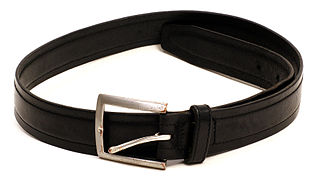
A belt is a flexible band or strap, typically made of leather, plastic, or heavy cloth, worn around the natural waist or near it. The ends of a belt are free; and a buckle forms the belt into a loop by securing one end to another part of the belt, at or near the other end. Often, the resulting loop is smaller than the hips. Belts come in many lengths because of the variety in waist sizes, and most belts can be adjusted at the buckle to suit the wearer's waist.

A waistcoat, or vest, is a sleeveless upper-body garment. It is usually worn over a dress shirt and necktie and below a coat as a part of most men's formal wear. It is also sported as the third piece in the traditional three-piece male suit. Any given vest can be simple or ornate, or for leisure or luxury. Historically, the vest can be worn either in the place of or underneath a larger coat dependent upon the weather, wearer, and setting.

A blouse is a loose-fitting upper garment that was worn by workmen, peasants, artists, women, and children. It is typically gathered at the waist or hips so that it hangs loosely ("blouses") over the wearer's body. Today, the word most commonly refers to a girl's or woman's dress shirt. It can also refer to a man's shirt if it is a loose-fitting style, though it rarely is. Traditionally, the term has been used to refer to a shirt which blouses out or has an unmistakably feminine appearance.
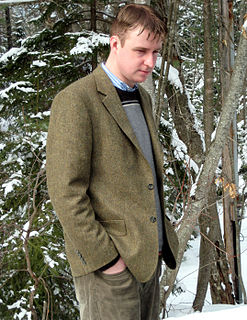
A jacket is a garment for the upper body, usually extending below the hips. A jacket typically has sleeves, and fastens in the front or slightly on the side. A jacket is generally lighter, tighter-fitting, and less insulating than a coat, which is outerwear. Some jackets are fashionable, while others serve as protective clothing. Jackets without sleeves are vests.

Gabardine is a tough, tightly woven fabric used to make suits, overcoats, trousers, uniforms, windbreakers and other garments.
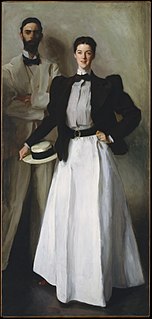
Fashion in the 1890s in European and European-influenced countries is characterized by long elegant lines, tall collars, and the rise of sportswear. It was an era of great dress reforms led by the invention of the drop-frame safety bicycle, which allowed women the opportunity to ride bicycles more comfortably, and therefore, created the need for appropriate clothing.

A frock coat is a formal men's coat characterised by a knee-length skirt cut all around the base just above the knee, popular during the Victorian and Edwardian periods (1820s–1920s). It is a fitted, long-sleeved coat with a centre vent at the back and some features unusual in post-Victorian dress. These include the reverse collar and lapels, where the outer edge of the lapel is often cut from a separate piece of cloth from the main body and also a high degree of waist suppression around the waistcoat, where the coat's diameter round the waist is less than round the chest. This is achieved by a high horizontal waist seam with side bodies, which are extra panels of fabric above the waist used to pull in the naturally cylindrical drape. As was usual with all coats in the 19th century, shoulder padding was rare or minimal.
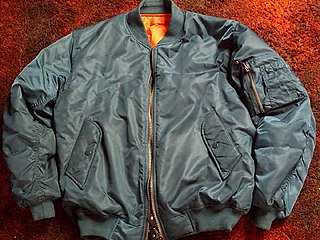
A flight jacket is a casual jacket that was originally created for pilots and eventually became part of popular culture and apparel. It has evolved into various styles and silhouettes, including the "letterman" jacket and the fashionable "bomber" jacket that is known today.

Fashion in the 1990s was defined by a return to minimalist fashion, in contrast to the more elaborate and flashy trends of the 1980s. One notable shift was the mainstream adoption of tattoos, body piercings aside from ear piercing and, to a much lesser extent, other forms of body modification such as branding.
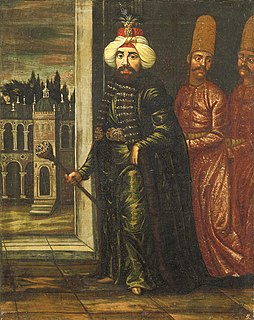
The somewhat vaguely defined term dolman can refer to various types of clothing, all of which have sleeves and cover the top part of the body, and sometimes more. Originally, the term dolaman referred to a long and loose garment with narrow sleeves and an opening in the front. Generally worn by Turks, it resembled a cassock in shape.

Fashion in the years following World War II is characterized by the resurgence of haute couture after the austerity of the war years. Square shoulders and short skirts were replaced by the soft femininity of Christian Dior's "New Look" silhouette, with its sweeping longer skirts, fitted waist, and rounded shoulders, which in turn gave way to an unfitted, structural look in the later 1950s.

Fashion in the 1970s was about individuality. In the early 1970s, Vogue proclaimed "There are no rules in the fashion game now" due to overproduction flooding the market with cheap synthetic clothing. Common items included mini skirts, bell-bottoms popularized by hippies, vintage clothing from the 1950s and earlier, and the androgynous glam rock and disco styles that introduced platform shoes, bright colors, glitter, and satin.

The MA-1 bomber jacket is an American military jacket which was developed in the 1950s. The MA-1 and its predecessor, the B-15 flight jacket, were originally developed and needed at that time because the emergence of the jet age created new requirements for pilot performance, safety, and comfort.
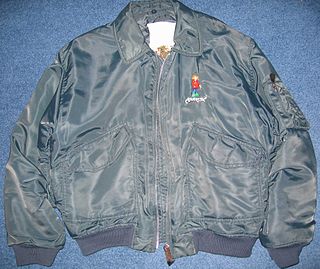
The MA-2 bomber jacket is an advanced version derived of the original MA-1 bomber jacket that was originally designed for the American military during the 1950s. CWU stands for "Cold Weather Uniform."
This is a list of existing articles related to fashion and clothing. For individual designers, see List of fashion designers

Maternity clothing is worn by women as an adaptation to changes in body size during pregnancy. The evolution of maternity clothing began during the Middle Ages, and became fashionable as women became more selective about style and comfort in the types of maternity clothing they wore. Fashions were constantly changing over time, such as the high-waisted Empire silhouette style maternity dress that was fashionable at the turn of the 19th century, and the "wrapper" style dress of the Victorian era that a woman could simply wrap around herself and button up.

A Garibaldi shirt was a woman's fashion, a red wool shirt named after the Italian patriot Giuseppe Garibaldi first popularized in 1860. It was the direct ancestor of the modern women's blouse.

The ruqun is a traditional Chinese attire which consists of a short jacket worn under a long skirt. However, when use as a general term, ruqun can broadly describe a set of attire which consists of a separated upper garment and a wrap-around lower skirt, or yichang, in which yi means upper garment, and chang means lower garment. In a broad sense, ruqun can include shanqun and aoqun in its definition.

A leather jacket is a jacket-length coat that is usually worn on top of other apparel or item of clothing, and made from the tanned hide of various animals. The leather material is typically dyed black, or various shades of brown, but a wide range of colors is possible. Leather jackets can be designed for many purposes, and specific styles have been associated with subcultures such as greasers, motorcyclists and bikers, mobsters, military aviators and music subcultures, who have worn the garment for protective or fashionable reasons, and occasionally to create a potentially intimidating appearance.

Fashion and clothing in the Philippines refers to the way the people of Filipino society dress up in instances such as while they are at home, at work, travelling and when attending special occasions.
























